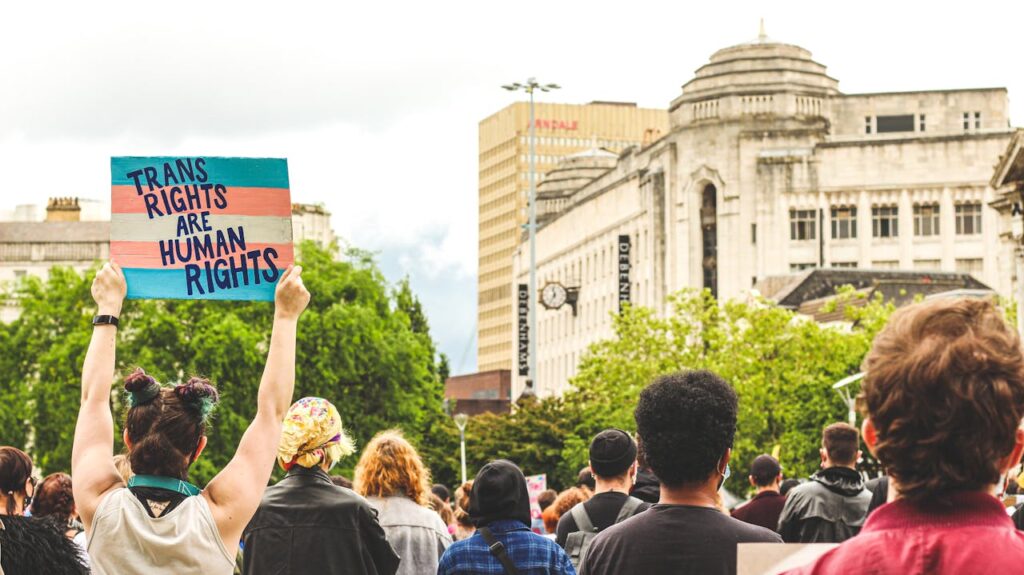Pride and the pursuit of tolerance

So how far have we come? Being LGBTQIA+ is at least permitted under the law now, people can marry and transition gender. What more is there to ask for?
Studies by both Stonewall and the Chartered Institute of Personnel and Development (CIPD) show that LGBTQ+ staff are made to feel subtly unwelcome and excluded even in inclusive workplaces. The CIPD have found that 16% of LGB+ workers and 18% of trans workers feel unsafe in the workplace, compared with 10% of heterosexual workers, while Stonewall found that 35% of LGBTQ+ people (and more trans than LGB+ people) concealed their true identities at work in order to continue to feel safe. Even in liberal organisations, the lived experiences of LGBTQ+ people vary across are too often a patchwork of departmental subcultures.
Discrimination is worse against LGBTQ+ minority subgroups
Bi, asexual and aromantic people
Most bi and trans people in particular often feel the need to conceal their sexual identities from colleagues for fear of discrimination, while all LGBTQ+ people are forced to live in a heteronormative environment where the only families others are willing to discuss are those with opposite-sex partners and (frequently) children. This identity erasure, often combined with increased self-monitoring to ensure they do not accidentally betray their sexual orientation to others through their mannerisms, combined with the sense of being distanced from those around them and being forced to hear homophobic/transphobic remarks and ‘jokes’ creates “minority stress” that harms the wellbeing of LGBTQ+ people and can lead to or compound serious mental health problems, including anxiety and depression. Childless people, more often LGBTQ+ than heterosexual, end up being asked to work the unsociable hours because others use the children they are so fortunate to have as an excuse for being unavailable, effectively disproportionately impacting the rights to personal lives of LGBTQ+ people.
CC BY-SA 2.0 Caitlin Childs 2008 from Flickr (https://www.flickr.com/photos/nerdcoregirl/2626737533/)
Trans people
Ironically, for a movement that started with a riot by Black, Latinx and trans people, the gay scene has always exhibited unbounded white privilege and transphobia. Trans people are still struggling to catch up and achieve rights comparable even to the rest of the LGBQ+ community, only to find other sexual minorities taking a step back when confronted by controversy. Trans exclusionary feminists (TERFs) have created such a controversy by declaring a conflict between and women’s body politics and the rights of trans women (by which I mean here men who have legally and surgically transitioned to become a woman), claiming that allowing those born as men (or intersex, essentially a hermaphrodite carrying both male and female genitals and having their gender chosen for them immediately after birth) to identify as women somehow threatens women, despite clear evidence this is not the case.
I have to wonder whether some cis-gendered women are simply fearful that because trans people are so heavily discriminated against, this discrimination might extend to women’s rights should policymakers be aware that they were granting the same rights to trans people. Given that men who transition to become women suffer reduced power in the workplace while women who transition to become men enjoy an increase in power and prestige, it does seem that trans women are treated not better than cis-women and often a lot worse. Further, the argument that trans women are a risk to cis-gendered women in women’s spaces, such as toilets, has been thoroughly debunked by the evidence: trans women are the ones who are assaulted while there have been almost no attacks on cis-gendered women by trans people in such spaces.

Racism and sexism in the LGBTQ+ community
Racism is endemic among the LGBTQ+ community, just as it is in society in general, and in the workplace ethnicity, gender, sexual orientation and gender expression all interact to unfairly influence the treatment and career prospects of employees. This led to the recent introduction of a series of new pride flags, including various designs that incorporated various skin tones alongside the traditional rainbow design, representing inclusion. I found it sad that so many people felt the need to change the symbol of inclusion that bleeds at its edges into infrared and ultraviolet representing the invisible and othered categories of discrimination not yet noticed, but clearly the new designs resonated with many.
CC BY-SA 4.0 Emercado2020 2020 from Wikimedia Commons (https://commons.wikimedia.org/wiki/File:LGBT_Gay_Trans_Pride_BLM_Fist_Flag.png)
Where next?
It is necessary for all minorities to collaborate to demand full inclusion. It is not enough for women, ethnic and sexual minorities to simply be tolerated within society and organisations. It is not enough for them to be offered a seat at the table. They must be given a voice, be heard, what they say must be listened to, valued, reflected upon and taken forward in actions. They must feel they are welcome and wanted at the table, that they belong and are part of society, not apart from it as a (barely) tolerated subgroup. In this, we might argue that Pride has gone awry, emphasising tolerance of difference to the point where it has made integration and inclusion more difficult.
Image credits
Silence = Death. Elvert Barnes, CC BY-SA 2.0 https://creativecommons.org/licenses/by-sa/2.0, via Wikimedia Commons




Leave a Comment (note: all comments are moderated)